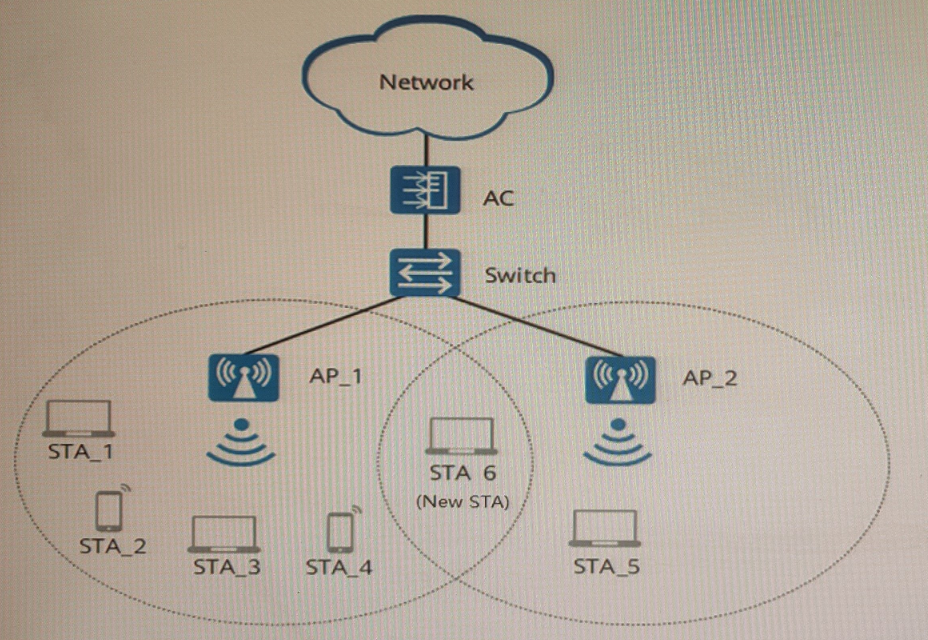Huawei HCIE-WLAN (Written) V1.0 H12-351_V1.0 Exam Practice Test
Which of the following configurations may cause ST As to experience a slow Internet connection? (Select All that Apply)
Answer : A, C, D
B is false because disabling radio 1 of APs does not affect the Internet connection speed of STAs that use radio 2.
An AP may preferentially use the BTM mode to steer some STAs. With which of the following protocols are such STAs compliant?
Answer : D
An AP may preferentially use the BTM mode to steer some STAs that are compliant with 802.11v protocol. BTM stands for BSS Transition Management, which is a feature defined in 802.11v protocol that allows an AP to send a request to a STA to switch to another BSS.
Which of the following advantages does BSS coloring provide in Wi-Fi 6? (Select All that Apply)
Answer : A, C, D
BSS coloring is a feature introduced in Wi-Fi 6 that assigns different colors to different BSSs to reduce co-channel interference. BSS coloring provides the following advantages:
Higher packet rate on the air interface: BSS coloring reduces collisions between packets from different BSSs on the same channel, improving packet transmission efficiency.
More efficient channel use: BSS coloring allows spatial reuse of channels by different BSSs, increasing channel utilization.
Higher concurrency in high-density scenarios: BSS coloring reduces interference among neighboring APs and improves network performance in high-density scenarios.
As shown in the figure, STA_1 through STA_4 are associated with AP_1, and STA_5 is associated with AP_2. Assuming that the load balancing threshold is 2, the load difference threshold is 25%, and API and AP2 support a maximum of 10 STAs, which of the following statements are true? (Select All that Apply)

Answer : A, B
The load percentage of an AP is calculated by dividing the number of associated STAs by the maximum number of STAs supported by the AP. In this case, the load percentage of AP_1 is 4/10 = 40%, and that of AP_2 is 1/10 = 10%. The load balancing mechanism needs to be enabled to balance the load between AP_1 and AP_2. Then some STAs are steered from AP_1 to AP_2 based on the load balancing threshold and the load difference threshold.
Which of the following key factors is used by the CloudCampus cloud management platform to determine the tenant to which a device belongs?
Answer : A
The device ESN (Electronic Serial Number) is a unique identifier that is used by the CloudCampus cloud management platform to determine the tenant to which a device belongs. The device ESN is bound to a tenant when a device is added to the platform.
In a VRRP HSB scenario, if the VRRP preemption delay is set to a small value, which of the following problems may occur after a master/backup switchover? (Select All that apply)
Answer : B, C
According to the Huawei documents and resources, the VRRP preemption delay is the time that an AC waits before preempting another AC with a lower priority. If the VRRP preemption delay is set to a small value, the following problems may occur after a master/backup switchover:
In a multicast solution, there must be reachable unlcast routes between multicast sources and receivers.
Answer : A
In a multicast solution, there must be reachable unicast routes between multicast sources and receivers, because multicast routing protocols use unicast routing information to build multicast forwarding trees.